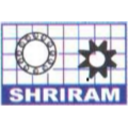
Choosing the Right Dal Mill Equipment for Your Needs
 Choosing the right dal mill equipment is crucial for achieving efficiency and quality in pulse processing. Dal, a staple in Indian cuisine, requires precise processing to meet the high standards of consumers. This guide explores the different types of dal mill equipment, including cleaners, polishers, and graders, offering insights into selecting the most suitable options for your needs. Alongside, we'll incorporate images to visually aid in understanding the diverse equipment involved in dal milling.
Choosing the right dal mill equipment is crucial for achieving efficiency and quality in pulse processing. Dal, a staple in Indian cuisine, requires precise processing to meet the high standards of consumers. This guide explores the different types of dal mill equipment, including cleaners, polishers, and graders, offering insights into selecting the most suitable options for your needs. Alongside, we'll incorporate images to visually aid in understanding the diverse equipment involved in dal milling.
Understanding Dal Mill Equipment
1. Cleaners: The first step in dal milling is cleaning the pulses, removing dust, dirt, and other impurities. Cleaners come in various types, such as pre-cleaners and fine cleaners, each designed for different stages of the cleaning process.
2. De-huskers and Splitters: De-husking removes the outer layer of the pulses, while splitters divide the de-husked pulses into two halves. These machines are essential for enhancing the dal's appearance and digestibility.
3. Graders: Grading equipment sorts the dal into different sizes, ensuring uniformity in the final product. It's vital for meeting consumer expectations and fetching better market prices.
4. Polishers: Polishers impart a glossy finish to the dal, improving its aesthetic appeal. They use water or oil and can significantly affect the product's marketability.
Selecting the Right Equipment
1. Assess Your Needs: Consider the scale of your operation, the types of pulses you plan to process, and your quality objectives. This assessment will guide your equipment choices, ensuring they align with your production goals.
2. Efficiency and Capacity: Look for equipment that matches your desired output levels without compromising on efficiency. Higher capacity machines are essential for large-scale operations, but they must also be energy-efficient to keep operational costs in check.
3. Durability and Maintenance: Opt for machines known for their durability and ease of maintenance. Reliable equipment reduces downtime and extends the lifespan of your dal mill.
4. Cost-Effectiveness: While initial cost is a significant factor, consider the long-term benefits of the equipment, such as energy efficiency, operational costs, and potential for future upgrades.
5. Vendor Reputation: Choose equipment from reputable vendors who offer after-sales support, including installation, training, and maintenance services. Good vendor support can significantly ease the integration of new equipment into your operations.
Advanced Technologies in Dal Mill Equipment
Innovation in dal mill technology has led to the development of advanced machines that offer better efficiency, quality, and safety. For example, some modern polishers use less water or oil, reducing the product's moisture content and increasing its shelf life. Similarly, advanced graders and sorters use optical sensors to ensure precise grading and sorting, improving the overall quality of the dal.
Implementation Tips
1. Training: Ensure that your staff is adequately trained to operate the new equipment. Proper operation is crucial for achieving the desired efficiency and product quality.
2. Maintenance Schedule: Establish a regular maintenance schedule to keep the equipment in optimal condition. Preventive maintenance can help avoid costly repairs and downtime.
3. Quality Control: Implement quality control measures at different stages of the milling process. Regularly check the output to ensure it meets your quality standards.
Conclusion
Selecting the right dal mill equipment is a strategic decision that impacts the quality of your product and the efficiency of your operations. By carefully considering your needs and evaluating the available options, you can choose equipment that not only meets your current requirements but also accommodates future growth. Advanced technologies in dal mill equipment can offer significant advantages, but the key to success lies in proper operation, regular maintenance, and stringent quality control.
Incorporating the right mix of cleaners, polishers, graders, and other dal mill equipment is essential for setting up a successful milling operation. With the right approach and equipment, you can achieve high-quality dal that satisfies your customers' expectations and strengthens your position in the market.

